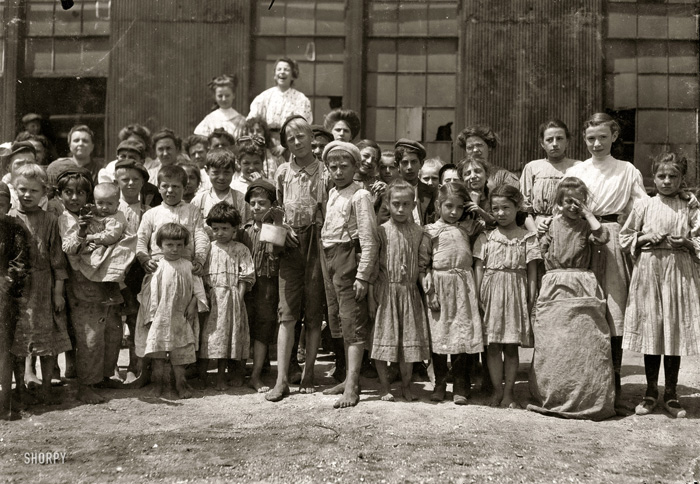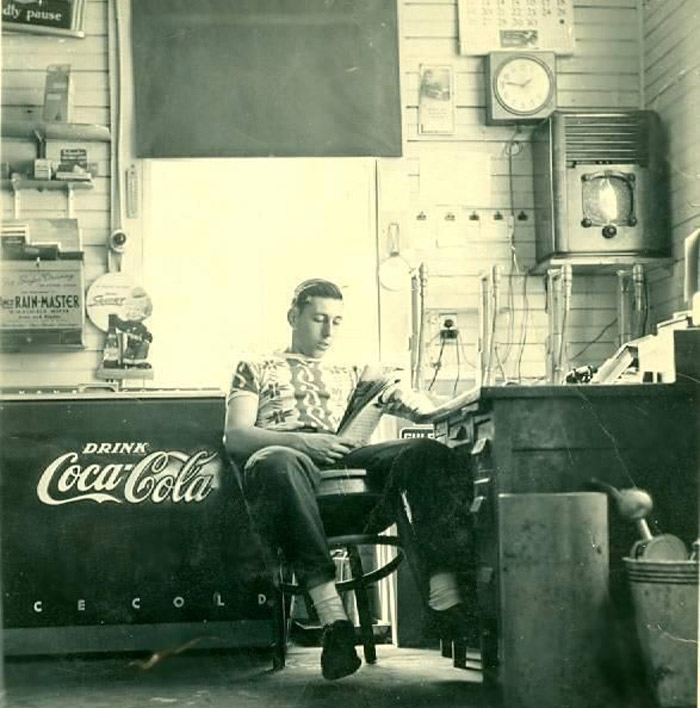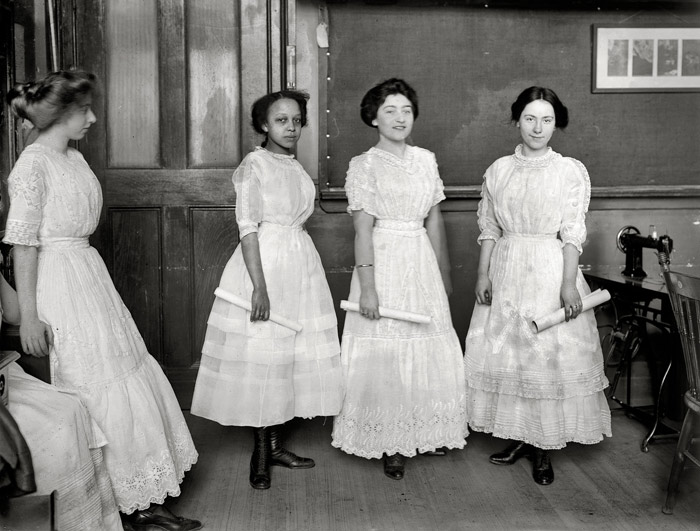Hole in the Clouds
May 22, 2011
 The caption is missing from this Lewis Hine photo in the Library of Congress, but it was taken in the year 1900 and is believed to show children who worked at a seafood-packing plant in Baltimore.
The caption is missing from this Lewis Hine photo in the Library of Congress, but it was taken in the year 1900 and is believed to show children who worked at a seafood-packing plant in Baltimore.
The Baltimore seafood packers were immigrant families who called themselves Slovonians; they came mostly from regions of Eastern Europe that would later become Czechoslovakia and Yugoslavia. After a few years in Baltimore, many relocated to Biloxi, Mississippi, which became the center of American seafood processing through much of the twentieth century. There is still a Slovonian Society and Social Club in Biloxi.
Lewis Hine's photographs of working children were part of his eventually successful campaign to end child labor in the United States. This picture is a bit different, however. If you click on the photo to view a larger version, you will notice that several of the children are clearly too young to pack fish; one is too young to walk. And unlike Hine's usual subjects, some of these children are smiling, even laughing.
Maybe the picture is a reject from the anti–child labor campaign, hence the missing caption. Perhaps the children were families of seafood packers, but not necessarily working themselves as seafood packers. But it is clear from Hine's other photographs that at least some of these children did in fact work long, miserable hours in the wretched factory they are posed in front of. They nonetheless laugh and smile, we have to assume, because that's what children do.
children
Baltimore
work
(h/t: Shorpy)
immigrants
1900
(Image credit: Lewis Hine)
Dec 20, 2011
 This general store in Fort Covington, New York, a border town about 75 miles southwest of Montreal, was the pride and joy of Elsie and Charles J. Clarke, who are pictured here behind the counter in the mid-1920s. Charles Clarke, who had emigrated to Canada as a boy aboard one of the orphan ships from Liverpool, England, had somehow managed to save up enough money to buy his very own store. A few years later, however, during the devastation of the Great Depression, the Clarkes extended so much credit to their customers and had to conduct so much of their trade by barter that they lost the store.
This general store in Fort Covington, New York, a border town about 75 miles southwest of Montreal, was the pride and joy of Elsie and Charles J. Clarke, who are pictured here behind the counter in the mid-1920s. Charles Clarke, who had emigrated to Canada as a boy aboard one of the orphan ships from Liverpool, England, had somehow managed to save up enough money to buy his very own store. A few years later, however, during the devastation of the Great Depression, the Clarkes extended so much credit to their customers and had to conduct so much of their trade by barter that they lost the store.
New York
store
(h/t: Shorpy)
Elsie and Charles J. Clarke
Fort Covington
1920s
orphan ship
Mar 28, 2012
 William Pinkerton, back in the day, hard at work at the dispatch desk at Bud Wood's taxi service in Rockland, Maine.
William Pinkerton, back in the day, hard at work at the dispatch desk at Bud Wood's taxi service in Rockland, Maine.
vintage
Maine
1950s
work
(h/t: Shorpy)
Rockland
Jun 15, 2012
 Back in 1909, high school graduation day was something like prom night nowadays; it had become so expensive and extravagant that the editors of the New York Times were fussing about it.
Back in 1909, high school graduation day was something like prom night nowadays; it had become so expensive and extravagant that the editors of the New York Times were fussing about it.
A girl's graduation dress might cost $10--$280 today--or even more. At the city's Washington Irving High School, the dressmaking department came up with the idea of dollar dresses--fabric, trimming, thread, buttons, etc., all purchased for less than one dollar total--to be sewn by the graduate herself. Twenty-seven girls in the class of 1909 took up the challenge, and according to the New York Times, all twenty-seven dresses were indistinguishable from the expensive ones worn by their classmates on commencement day.
In 1905 my grandmother sewed herself a wedding dress that looked much like these dresses. Assuming that the fabric and notions must have cost her about dollar, she would have earned the money by selling a hundred glasses of seltzer at a penny apiece, and then washing all hundred glasses.
New York City
(h/t: Shorpy)
Washington Irving High School
senior
dresses
sewing
 The caption is missing from this Lewis Hine photo in the Library of Congress, but it was taken in the year 1900 and is believed to show children who worked at a seafood-packing plant in Baltimore.
The caption is missing from this Lewis Hine photo in the Library of Congress, but it was taken in the year 1900 and is believed to show children who worked at a seafood-packing plant in Baltimore.
 William Pinkerton, back in the day, hard at work at the dispatch desk at Bud Wood's taxi service in Rockland, Maine.
William Pinkerton, back in the day, hard at work at the dispatch desk at Bud Wood's taxi service in Rockland, Maine.